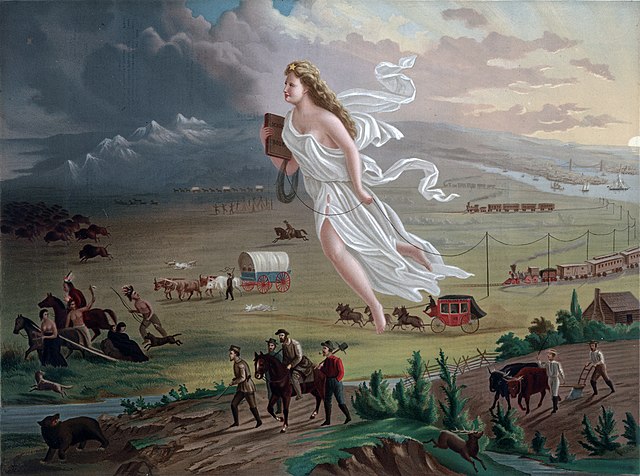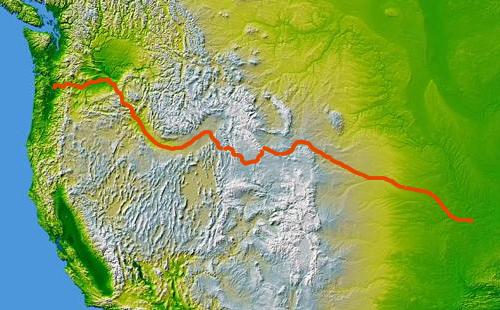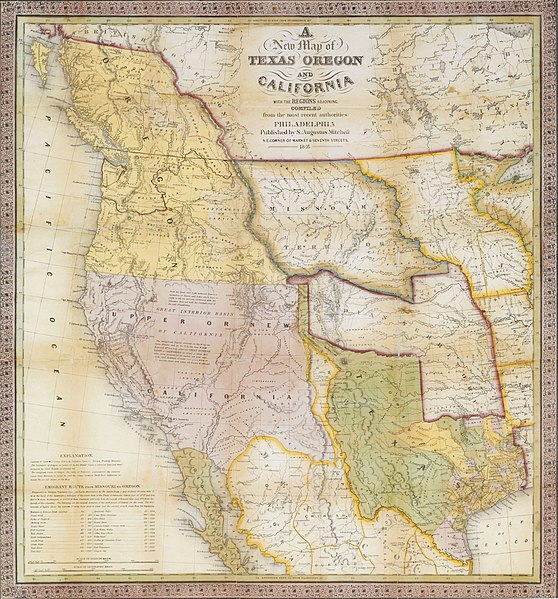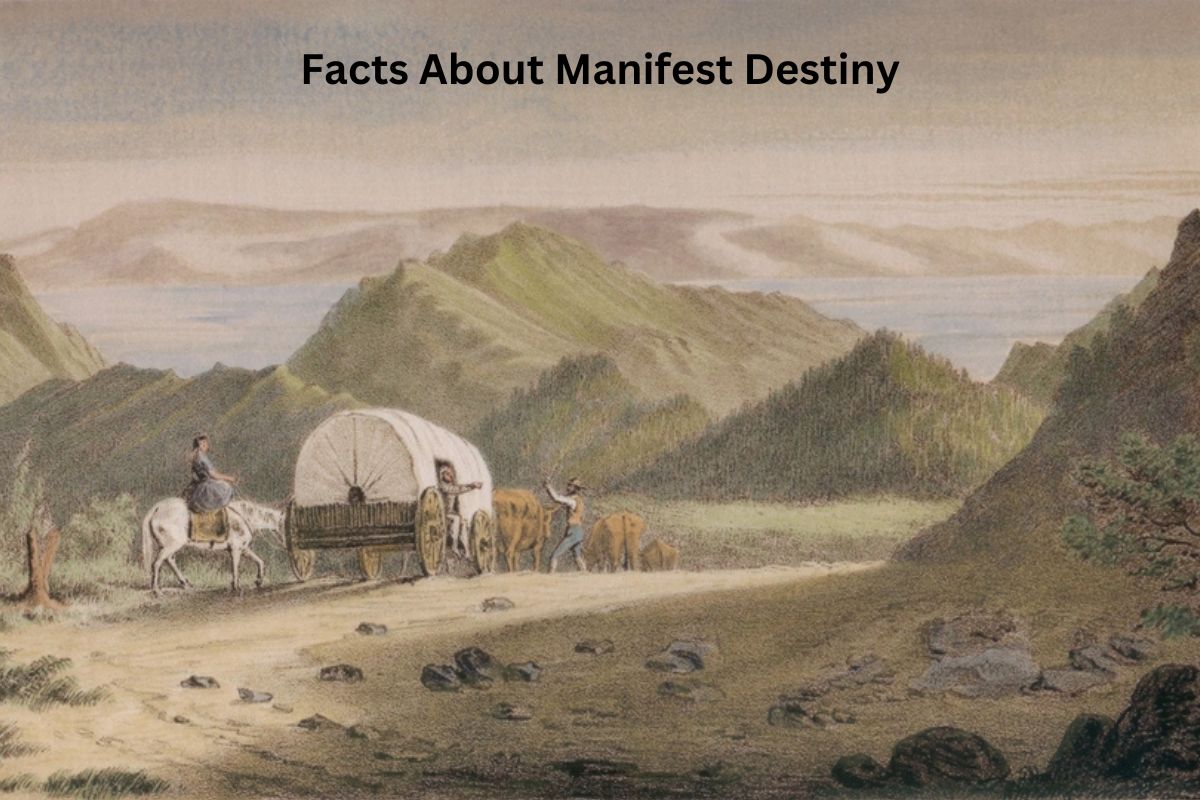Manifest Destiny was a 19th-century belief that profoundly influenced the expansion of the United States. Coined by journalist John L. O’Sullivan in 1845, it asserted that America had a divine mission to expand westward, from the Atlantic to the Pacific Ocean.
This belief led to significant historical events, including westward migration, territorial acquisition through war, and the transformation of the United States into a continental nation.
However, Manifest Destiny also sparked conflicts, raised ethical questions, and had a lasting impact on the nation’s identity and geography.
Manifest Destiny Facts
1. Coined by John L. O’Sullivan in 1845
The term “Manifest Destiny” was first introduced by John L. O’Sullivan, a prominent American journalist and editor. He used this phrase in an article published in the Democratic Review in 1845.
Also Read: Timeline of Manifest Destiny
In the article, O’Sullivan argued that it was America’s destiny, clear and manifest, to expand its territory from the Atlantic Ocean to the Pacific Ocean.

2. Focused on westward expansion
Manifest Destiny was primarily centered around the idea of westward expansion. It was the belief that the United States had a providential mission to extend its borders westward across the North American continent.
This expansion would involve the settling of new territories, the establishment of communities, and the development of land, ultimately connecting the Atlantic and Pacific coasts.
3. Seen as a divine mission
A key element of Manifest Destiny was the notion that this westward expansion was divinely ordained.
Many Americans believed that God had chosen the United States to carry out this mission, and they viewed it as a moral obligation to spread American democracy, culture, and values to the frontier.
This belief in a divine mission served as a powerful justification for the territorial expansion and settlement of the American West, even in the face of opposition and conflict.
4. Led to the Mexican-American War
Manifest Destiny played a significant role in the lead-up to the Mexican-American War, which began in 1846 and ended in 1848.
Also Read:
The belief that it was America’s destiny to expand westward led to disputes over the Texas-Mexico border. Texas had previously declared its independence from Mexico in 1836 and sought annexation by the United States.
In 1845, the U.S. annexed Texas, which Mexico viewed as a violation of its sovereignty. These tensions eventually escalated into a full-scale war between the two nations.

5. Resulted in the acquisition of Texas
The Mexican-American War resulted in the United States gaining control of significant territories.
The Treaty of Guadalupe Hidalgo, signed in 1848 to end the war, ceded a vast amount of land to the U.S., including present-day California, Arizona, New Mexico, Nevada, Utah, and parts of Colorado, Wyoming, Kansas, and Oklahoma.
Texas, which had been annexed prior to the war, was also officially recognized as part of the United States. This territorial expansion greatly increased the size of the country.
6. Pioneers traveled along the Oregon Trail
The idea of Manifest Destiny inspired thousands of pioneers and settlers to journey westward in search of fertile land, economic opportunities, and a better life. One of the most famous routes for westward migration was the Oregon Trail.
This trail began in Missouri and stretched over 2,000 miles to the Oregon Territory in the Pacific Northwest. Pioneers faced numerous challenges, including harsh terrain, severe weather, and the need for self-sufficiency.
The journey along the Oregon Trail marked a significant chapter in American westward expansion.
7. Sparked the California Gold Rush
One of the most transformative events associated with Manifest Destiny was the California Gold Rush of 1848-1855. Gold was discovered at Sutter’s Mill in California in January 1848, leading to a rush of prospectors from around the world to the region.
These “49ers” sought to strike it rich by mining for gold in California. The Gold Rush had a profound impact on the development of California, leading to a rapid population increase, economic growth, and the eventual statehood of California in 1850.

8. Ended with the Treaty of Guadalupe Hidalgo in 1848
The Mexican-American War, which was fueled by the concept of Manifest Destiny, came to a conclusion with the Treaty of Guadalupe Hidalgo in 1848. This treaty was negotiated between the United States and Mexico and had several significant outcomes.
Mexico recognized Texas as part of the United States, ceded a vast amount of territory to the U.S., and established the Rio Grande as the southern border of Texas. In return, the United States paid Mexico $15 million and assumed responsibility for the claims of American citizens against Mexico.
9. Expanded the U.S. from coast to coast
Manifest Destiny had a profound impact on the geographic expansion of the United States. By the mid-19th century, it had led to the acquisition of vast territories, including the Oregon Country, Texas, and the Mexican Cession.
This expansion effectively transformed the United States from a collection of eastern seaboard states into a continental nation that stretched from the Atlantic Ocean to the Pacific Ocean. It fulfilled the vision of a nation that spanned the entire continent.
10. Raised ethical questions about expansion
Manifest Destiny was not without controversy. It raised significant ethical questions about the morality of westward expansion, especially concerning the treatment of indigenous peoples.
The forced removal of Native American tribes from their ancestral lands, such as the Trail of Tears, exemplified the tragic consequences of Manifest Destiny.
Additionally, the acquisition of Mexican territory through war prompted debates about the justification and consequences of military conquest for territorial gain. These ethical concerns continue to be a topic of historical debate and reflection.
